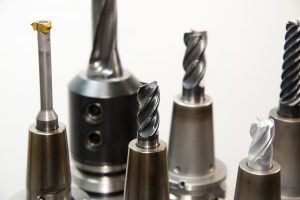How to pack machine parts for shipping
Need to move some machinery and not sure what – and how – to do? Worry no more, we will go in-depth on how to pack machine parts for shipping! If you’re not sure what is the right procedure, you can always count on our supreme packing services that will do all the hard work for you! Still, if you want to learn more about this topic, read on!
Is there one right way to pack machine parts for shipping
When you want to relocate any machinery and need to pack machine parts for shipping, you will probably need some help – especially if you’re moving long-distance. In that case, you can always count on our long distance movers Charleston SC that will help you move any bulky item without any stress. Besides, packing parts in the right way can save you time and money.

Here are some tips on what you can do on your own:
- try to find instructions and documentation on how to disassemble and assemble your machinery. This will greatly help in packing machine parts for shipping
- find the right packing material for this kind of packing. You can always contact our long distance moving Sarasota section that will help you to decide what is the best protective material for your type of machinery
- protect all edges and corners parts of your machinery
- any fragile parts should be carefully protected with a cushioning material or by putting them in a container
- place shipping info or other labels on a flat surface and avoid curved surfaces. Labels should be put on a largest and most visible surface area
- use tags, crate labels, plastic pouches and not wire tags for your documentation
Some basic tools you’ll need
If you decide to ship internationally and want to prepare your machine parts beforehand, here are some basics you should follow. First of all, your machinery is probably heavy or bulky, so you may need some tools to disassemble it.

Depending on the machine, you will probably need:
- instruction manual for your machinery
- pliers
- protective equipment
- packing material
- adhesive tape or bands
- cushioning material
- moving boxes or additional protective material
This list is just a general recommendation and not a final list you will need. If you are not an expert please do not try to disassemble any type of machinery on your own. You can easily hurt yourself and others so please be aware of the fact that dissembling heavy machinery is not for amateurs. It’s always the safest (and best) solution to call service or company that has experience both in packaging and shipping machine parts.
Next steps
If you have decided to finish some of the basics before you call experienced help, you may do the following:
Unplug your machine from the electric power. Think about safety first. Unplugging your machine from electric power is always the first and safest step you can take. Before you unplug it from the power, turn off your machine completely – this means turning off any buttons that put your machine into function.
Look at the instruction manual carefully. Reading the instruction can help you learn about the parts of your machine you need to pack. Also, it may give you additional safety instructions that you wouldn’t know about. Remember, every machine is different, so read the manual carefully.
Dissemble the easy parts first. If your machinery has some plastic or light parts that you can take off without damaging or breaking your machinery, dissemble that first. Those can be anything from plastic lids, doors to electric cables and plugs. It would be a great idea to take photos or make a video so you know how to assemble it properly later.
Call experts or machine service. If you’re not sure how to disassemble your machinery into parts, call the company that produces this type of machine and ask for help. You can also call a handyman who knows about your type of machinery.

Pack the light parts first. The chances are that the lighter parts are more fragile than the heavy ones. Pack those parts first and label them properly so the shipping company would know what goes with what.
Make sure to use protective material on all parts of your machine. The heavier or bulkier parts of your machinery need protection too. Make sure to protect your machine from all sides.
Don’t move the machinery on your own. Move your machine or machine parts only if you have to. If not, it’s best to wait for professional help that will do all the heavy lifting for you, which will guarantee the safety of your machinery – and your own. If you do need to move some parts or the whole machine, do call at least 3 people to help you out. This is definitely not the job you should do on your own. Of course, be very careful in moving or sliding your machinery. Go slow, push with your legs (not your back), and rest as much as possible. When moving, always remember to secure your machine with tapes or bands.
Tips on shipping your machine parts
Here are some tips that can help you when shipping your machinery or machine parts:
- always ship with official shipping companies
- empty or drain all parts that may include liquids before shipment or make sure that liquid is not leaking while moving
- adequate packaging is simply a must so make sure to hire professional help or triple-check that you did it correctly. This will help you reduce damaging your machine and ensuring overall safety.





